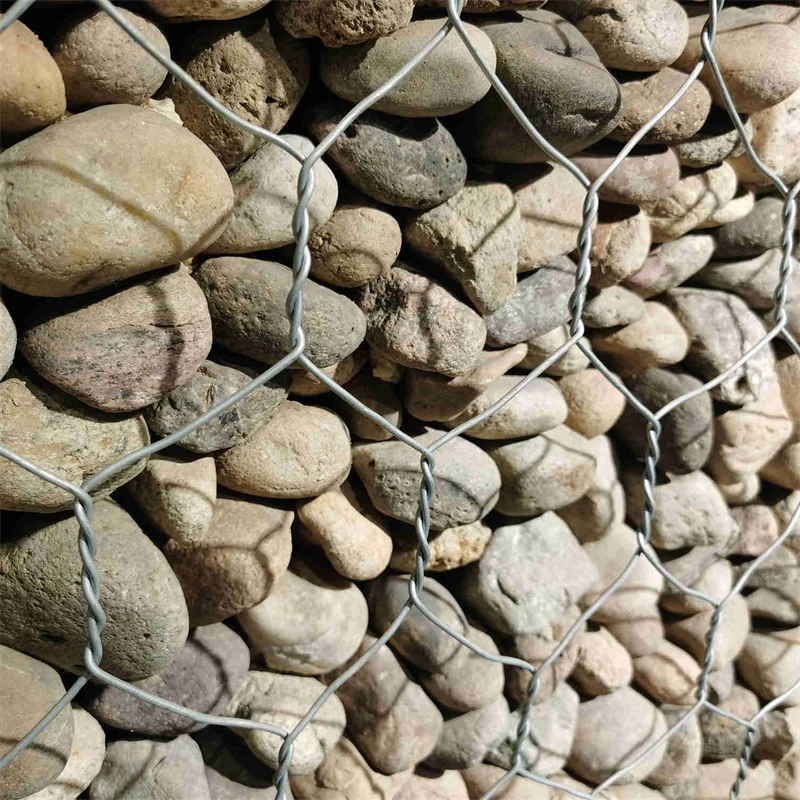12 月 . 26, 2024 02:16 Back to list
Innovative Gabion Edging Solutions for Sustainable Landscape Design in China
The Versatility and Benefits of Gabion Edging in Landscaping
Gabion edging has become an increasingly popular choice in landscaping for both residential and commercial projects. These decorative yet functional structures offer a unique way to define spaces, control erosion, and enhance the overall aesthetic of outdoor areas. With their durability and versatility, gabion edges have found their place in various types of landscaping applications.
What is Gabion Edging?
Gabion edging consists of wire mesh baskets filled with stone, gravel, or other materials. The name gabion originates from the Italian word gabbione, which means big cage. These baskets are typically rectangular or cylindrical and can be arranged in various configurations to create beautiful and sturdy borders for gardens, pathways, and other outdoor spaces. The use of gabions can effectively retain soil while preventing erosion, making them a popular choice in areas prone to water runoff.
Aesthetic Appeal
Gabion edging provides a rustic yet contemporary look that can seamlessly blend with natural and modern landscapes. The stones used in the baskets can vary in size, shape, and color, allowing for endless design possibilities. From sleek and polished river stones to rough, weathered rocks, home and property owners can select materials that match their personal style and the overall theme of their landscaping. Gabions can also be stacked to varying heights, giving the designer control over the visual impact of the edging.
Environmental Benefits
One of the key advantages of gabion edging is its environmental benefits. Since these structures are often made from natural materials, they can help promote biodiversity by providing habitats for small wildlife. Gabion walls are also permeable, allowing water to flow through the stones, thereby reducing runoff and promoting groundwater recharge. This characteristic makes gabion edging an eco-friendly choice for landscaping, as it contributes to sustainable land management practices.
china gabion edging

Erosion Control
Erosion can pose a significant threat to gardens and other outdoor spaces, especially in areas with steep slopes or heavy rainfall. Gabion edging serves as an effective solution by stabilizing soil and preventing it from washing away. The mesh baskets containing the stones form a natural barrier that absorbs and dissipates water energy, thereby reducing the impact of heavy rains. As a result, gardens protected by gabion edging are less likely to suffer from erosion-related damage.
Easy Installation and Maintenance
Another appealing aspect of gabion edging is its relatively straightforward installation process. Homeowners can either opt for professional installation or take on the project themselves. The materials required are readily available and can be sourced from local landscape suppliers. Once constructed, gabion walls require minimal maintenance, as they are resistant to weathering, pests, and decay. Occasional inspections may be necessary to ensure the integrity of the wire mesh, but overall, gabion edging is a low-maintenance option.
Cost-Effectiveness
Gabion edging is also a cost-effective landscaping solution. The materials used are often less expensive than traditional landscaping methods such as concrete or brick walls. Additionally, the long lifespan of gabions means that they are less likely to need frequent replacement. This durability, combined with the minimal maintenance required, makes gabion edging a wise investment for homeowners looking to enhance their outdoor spaces.
Conclusion
In summary, gabion edging offers a multitude of benefits that make it an attractive choice for anyone looking to elevate their landscaping. With its unique aesthetic appeal, environmental advantages, erosion control capabilities, easy installation, and cost-effectiveness, gabion edging stands out as a versatile and practical solution. Whether you aim to create a charming garden border, stabilize a slope, or simply enhance the beauty of your outdoor areas, gabion edging presents an innovative approach to achieving your landscaping goals. Embracing this technique not only beautifies the landscape but also contributes to sustainable practices that benefit the environment.
-
hesco-gabion-baskets-for-coastal-erosion-prevention
NewsAug.22,2025
-
longevity-and-durability-of-river-rock-gabion-walls
NewsAug.22,2025
-
how-to-integrate-gabion-3d-walls-in-urban-planning
NewsAug.22,2025
-
reno-mattress-gabion-applications-in-civil-engineering
NewsAug.22,2025
-
how-to-install-wire-mesh-for-gabion-baskets-properly
NewsAug.22,2025
-
best-materials-for-filling-a-chain-link-gabion
NewsAug.22,2025
-
Wire Mesh Thickness Impact on Gabion Wall Load Bearing
NewsAug.12,2025






